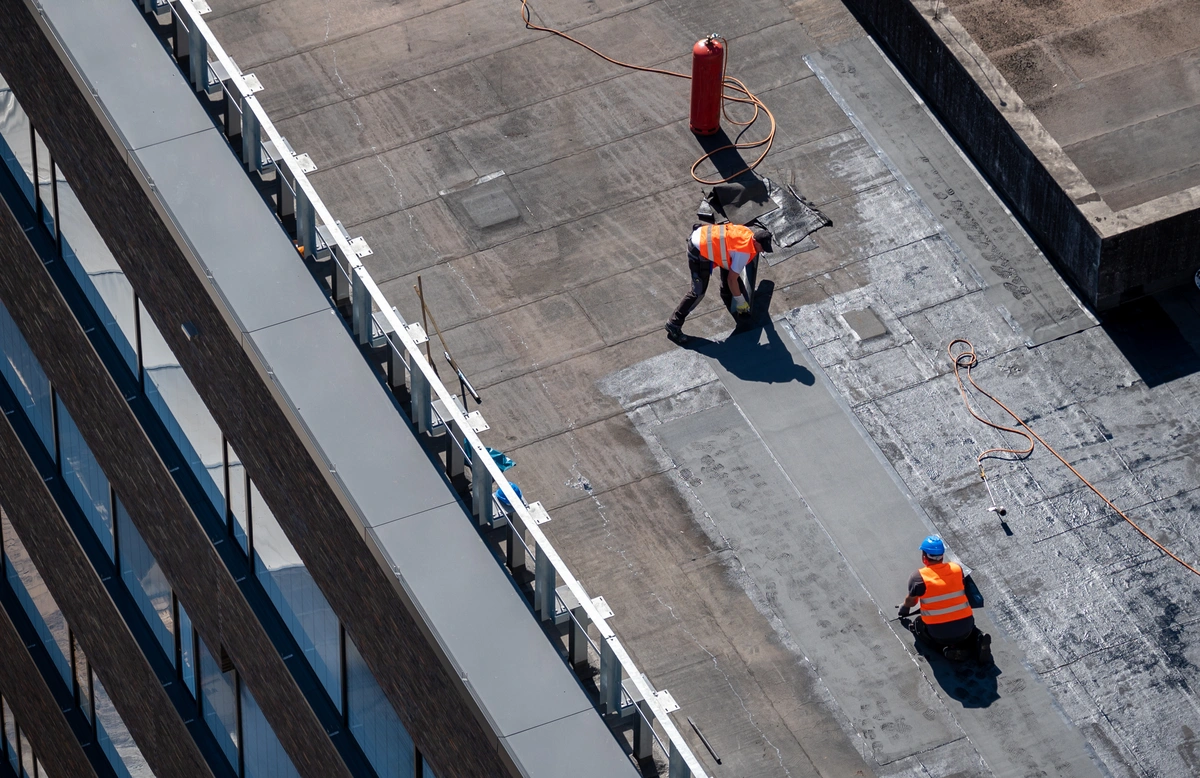
Blog
DIY Flat Roof Repair (Step by Step Guide)
What Are Flat Roofs?
Flat roofs are a common feature in modern architecture, prized for their sleek aesthetic and space-saving design. However, they come with their own set of challenges, particularly when it comes to maintenance and repair.

In this guide, we’ll go into:
- What makes flat roofs different
- Why they are susceptible to damage
- Signs of flat roof damage
- What to do when you spot issues
- The flat roof repair process
- How to prevent damage in the future
What Makes Flat Roofs Different?

Unlike traditional pitched roofs, flat roofs have a minimal slope, if any at all. They are typically found on commercial buildings, modern homes, and extensions. The absence of a steep incline means water doesn’t naturally run off as quickly, which can lead to pooling if not properly drained.
Additionally, flat roofs often incorporate different materials than pitched roofs, such as built-up roofing (BUR), modified bitumen, EPDM (ethylene propylene diene terpolymer), PVC (polyvinyl chloride), or TPO (thermoplastic olefin).
Why Are Flat Roofs Susceptible to Damage?
Several factors contribute to the vulnerability of flat roofs:
- Drainage Issues: As mentioned, water drainage can be problematic on flat roofs, leading to pooling and eventual leaks.
- Weather Exposure: Flat roofs are more exposed to the elements, including harsh sunlight, rain, snow, and debris accumulation. Over time, this exposure can degrade roofing materials.
- Seam Vulnerability: Many flat roofing systems are constructed with seams where different sections of material meet. These seams can weaken over time, allowing water infiltration.
- Foot Traffic: Flat roofs are often used as additional outdoor space, leading to foot traffic that can cause wear and tear on the roofing materials.
Signs of Flat Roof Damage
Detecting damage early can prevent more extensive issues down the line. Here are some common signs of flat roof damage:
- Leaks: Water stains on the ceiling or walls indicate a leak, which could originate from the roof.
- Pooling Water: Standing water on the roof after rain indicates drainage problems.
- Tears or Blisters: Tears, cracks, or blisters in the roofing material are signs of wear and potential leaks.
- Sagging: A visibly sagging roof indicates structural damage or water absorption.
- Visible Mold or Mildew: Moisture trapped under the roofing material can foster mold and mildew growth.
What to Do When You See Damage to Your Flat Roof
Upon noticing signs of damage to your flat roof, it’s crucial to take immediate action to prevent further deterioration:
📸 Document the Damage:
Take photos or videos of the damage for documentation and future reference.
☎️ Contact a Professional:
Seek assistance from a qualified roofing contractor who specializes in flat roof repair. They can assess the extent of the damage and recommend appropriate solutions.
🧰 Temporary Fixes:
If the damage is minor and can be safely addressed, consider temporary fixes such as applying roofing cement or patching tears with compatible materials.

5 Steps in the Repair Process
Flat roof repair typically involves the following steps:
1) Assessment:
A professional roofer will inspect the roof to identify the extent of the damage and determine the underlying cause.
2) Cleaning:
Any debris, dirt, or vegetation on the roof will be removed to ensure a clean surface for repairs.
3) Repair or Replacement of Damaged Areas:
Depending on the severity of the damage, affected sections of the roofing material may be repaired or replaced.
4) Sealing Seams and Flashing:
Seams and flashing are sealed to prevent water infiltration.
5) Reapplication of Protective Coatings:
Protective coatings, such as sealants or reflective coatings, may be applied to enhance durability and weather resistance.
Cost of Flat Roof Repairs
The cost of flat roof repairs varies depending on several factors, including the extent of the damage, the type of roofing material, and the contractor’s rates. Minor repairs such as patching small tears or sealing seams may cost a few hundred dollars, while more extensive repairs or replacement of large sections of the roof can cost several thousand dollars. It’s essential to obtain multiple quotes from reputable contractors and consider the long-term benefits of investing in quality repairs.
How to Prevent Damage in the Future
While some degree of wear and tear is inevitable, proactive maintenance can extend the lifespan of your flat roof and reduce the likelihood of costly repairs. Here are some preventive measures to consider:
- Regular Inspections: Schedule annual inspections by a professional roofer to detect and address potential issues before they escalate.
- Keep the Roof Clean: Remove debris, leaves, and branches regularly to prevent water pooling and damage to the roofing material.
- Address Drainage Issues: Ensure that gutters, downspouts, and drainage systems are clear and functioning correctly to prevent water buildup.
- Trim Overhanging Branches: Trees near the building can deposit leaves and debris onto the roof and pose a risk of damage during storms. Trim overhanging branches to reduce this risk.
- Invest in Quality Materials and Installation: Choose high-quality roofing materials and hire experienced contractors for installation to ensure longevity and durability.
Flat Roof Replacement Assistance
Flat roof repair requires attention to detail, timely intervention, and proactive maintenance. By understanding the unique characteristics of flat roofs, recognizing signs of damage, and implementing preventive measures, you can protect your investment and enjoy a sturdy, leak-free roof for years to come.
Remember, when in doubt, consult with a professional roofing contractor for expert advice and assistance. Contact Avenue Roofing today for professional flat roof repair that you can count on!



